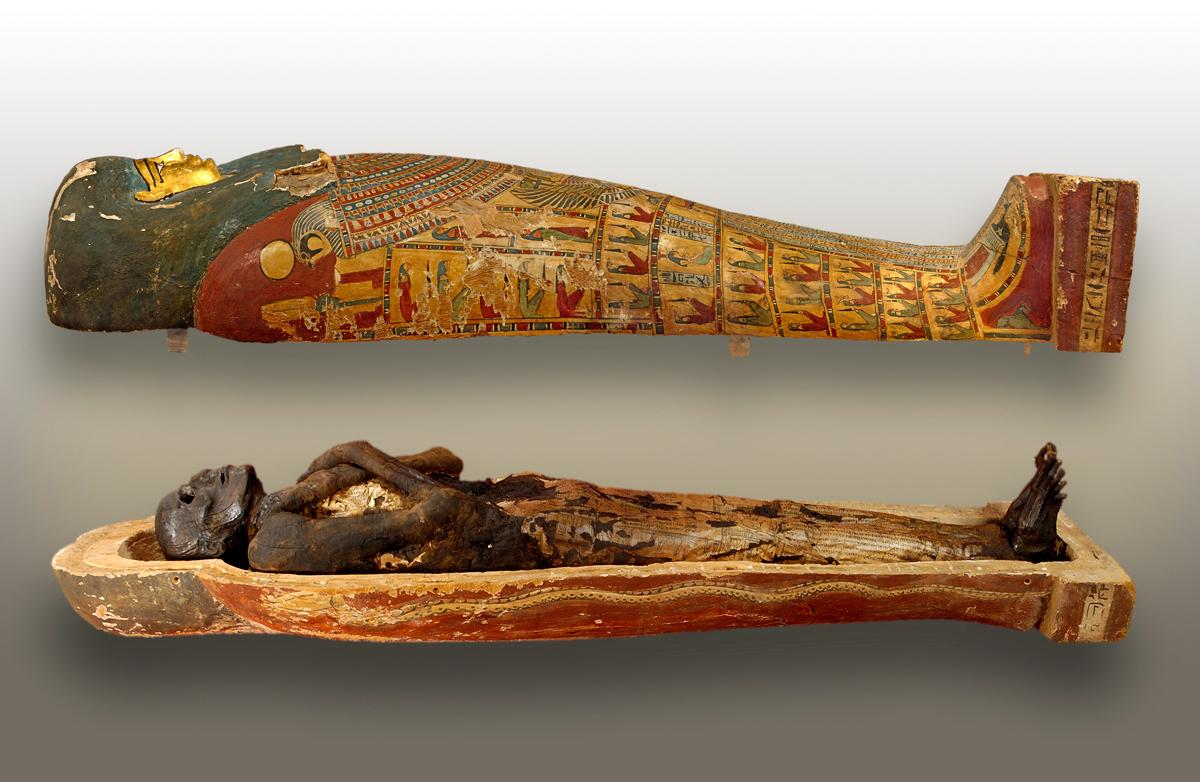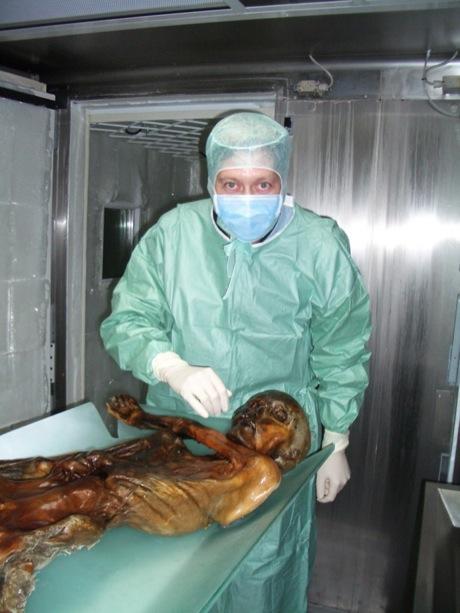
Figuring out why we get sick

What does an ancient Egyptian mummy or a 17th century skeleton found in Zurich tell us about illnesses that affect us today? Quite a lot actually, if you are looking from an evolutionary medicine perspective.
Combining such fields as evolutionary biology, archaeology and immunology, this relatively new research field looks to the past to gain some understanding of the present and find some solutions for the future.
The University of Zurich, which has the world’s only full-scale institute dedicated to evolutionary medicine External linkat a medical faculty, is at the forefront of this type of research, particularly when it comes into delving into the health secrets of the ancients.
It recently hosted the first-ever European conference on Evolutionary Medicine. External linkOne of the cases on show at the event was that of a skeleton, dating from the early 17th century, which was found in 2014 lying face down at the former Fraumünster convent in Zurich.
Daria Moser, a University of Zurich student of prehistoric archaeology External link involved in analysing the remains of the 30-year-old man, said that the skeleton showed afflicted joints and teeth.
Autoimmune disease
“All these pathologies which we could see here led us to the conclusion that he was most probably suffering from rheumatoid arthritis, that’s an autoimmune disease – when it seems as if the human system is attacking itself,” Moser told swissinfo.ch.
“We don’t really know where the disease comes from. There has been a long ongoing discussion about it and currently the hypothesis is that it originated in the Americas and came over after Columbus. What we basically found out is that this is the earliest case of rheumatoid arthritis in the old world.”
Rheumatoid arthritis is a chronic disabling condition often causing pain and deformity. It affects up to 1% of the world’s population. Around 70,000 people are living with the disease in Switzerland.External link
By looking back at this early case of rheumatoid arthritis, scientists hope to find out more about its evolution. This could help with finding a cure in the future, Moser says. And this is essentially what evolutionary medicine is all about.
Evolving area
Frank RühliExternal link, head of the university’s Institute of Evolutionary Medicine (IEM), said that the growing research area basically applied principles of evolutionary biology into the assessment of medical problems, medical health and disease.
“It’s basically like Randolph Nesse, one of the pioneers of the field, said, ‘medicine without evolutionary medicine is like engineering without physics’,” Rühli said.
It seeks to answers questions like: why do we have blood, why do we bleed and what are the factors that support or stop bleeding in the body? Evolutionary medicine also looks at variation in humans and adaptation of humans. Sometimes adaptations take place over a very short time, Rühli explained.
“I’m always telling my students that they will practise medicine for the next 50 years and that mankind will actually change in this 50 years,” he said. “Often, particularly inexperienced students may think everything’s like in the text book and written in stone. But it’s not the case.”
“We have adaptation of humans, changes in gene pools, population growth, migration. These are all factors which eventually will influence the gene pool, the morphology, how people look, how people act.”
And there’s the issue of normality, he says. People are simply different, genetically, morphologically and metabolically.
What mummies tell us
Rühli’s institute specialises is looking at disease in ancient mummiesExternal link. These can reveal more than skeletons because the soft tissue is preserved through the embalming process.
A surprising finding is that many of the ancient Egyptian mummies that have been studied – about half the cases – show severe arteriosclerosis, which is the thickening, hardening and fatty lining of the arteries which may lead to a heart attack or other cardiovascular problems.
“We are usually saying that arteriosclerosis is a modern lifestyle attributed disease,” Rühli said, referring to the fact that our high-fat diet has been considered a factor.
“This is not correct in this sense because we have a lot of cases of ancient humans who are suffering from arteriosclerosis and that’s fascinating because it basically shows that also the genetic basis for having it is actually quite old.”
State of the art technologies, like CT scans and x-rays, are used on mummies. This can give good results without harming the ancient bodies
The iceman cometh
The technology can even be used to solve thousands of year-old mysteries. Rühli was involved, for example, in using x-ray-based technology to determine the cause of death of the Iceman, “Oetzi”External link, a uniquely well-preserved Neolithic glacier mummy found in 1991 in the mountains of South Tyrol. The answer, by the way, was an arrow wound to the left shoulder.

It is even possible to extract ancient DNA from historical samples of bone and mummified tissue. This can tell us, for instance, whether ancient peoples were lactose persistent or intolerant, so whether they could tolerate milk after childhood or not. Italian scientists have, for example, found that Oetzi was lactose intolerantExternal link – unlike most modern Europeans, raised on a dairy diet.
It is argued that the genetic change towards tolerance in Europe took hundreds of years to occur.
For the future
Learning something from the past, for the present – and the future, is very stimulating, Rühli says.
“And it goes to the core of our challenges: if we have increased life expectancy that affects everyone in a very positive sense, but it also has consequences in terms of financial assessments, how far should medical technology go, what can be achieved with medical technology in 50 years’ time and what kind of consequences that will have on our body,” he said.
“You clearly see, that for example, if people move less they get less robust, they are more likely to fracture their bones. So every change has an impact and I think this is the fascinating thing about this novel approach within the traditional medical field.”
The Institute of Evolutionary Medicine (IEM)
The institute’s main competences are in ancient DNA, musculo-skeletal morphological evolution and mummy research.
It hosted the first ever European Conference on Evolutionary Medicine on July 30-August 1 2015. This brought together experts from around the world from different research areas, including medicine, anthropology, molecular/evolutionary biology, paleopathology, archaeology, epidemiology, and other fields. Among the keynotes was Nobel Laureate Harald zur Hausen, the German virologist who linked human papilloma virus (HPV) to cervical cancer.

In compliance with the JTI standards
More: SWI swissinfo.ch certified by the Journalism Trust Initiative































You can find an overview of ongoing debates with our journalists here . Please join us!
If you want to start a conversation about a topic raised in this article or want to report factual errors, email us at english@swissinfo.ch.